When I try to fit an exponential decay and my x axis has decimal number, the fit is never correct. Here's my data below:
exp.decay = data.frame(time,counts)
time counts
1 0.4 4458
2 0.6 2446
3 0.8 1327
4 1.0 814
5 1.2 549
6 1.4 401
7 1.6 266
8 1.8 182
9 2.0 140
10 2.2 109
11 2.4 83
12 2.6 78
13 2.8 57
14 3.0 50
15 3.2 31
16 3.4 22
17 3.6 23
18 3.8 20
19 4.0 19
20 4.2 9
21 4.4 7
22 4.6 4
23 4.8 6
24 5.0 4
25 5.2 6
26 5.4 2
27 5.6 7
28 5.8 2
29 6.0 0
30 6.2 3
31 6.4 1
32 6.6 1
33 6.8 2
34 7.0 1
35 7.2 2
36 7.4 1
37 7.6 1
38 7.8 0
39 8.0 0
40 8.2 0
41 8.4 0
42 8.6 1
43 8.8 0
44 9.0 0
45 9.2 0
46 9.4 1
47 9.6 0
48 9.8 0
49 10.0 1
fit.one.exp <- nls(counts ~ A*exp(-k*time),data=exp.decay, start=c(A=max(counts),k=0.1))
plot(exp.decay, col='darkblue',xlab = 'Track Duration (seconds)',ylab = 'Number of Particles', main = 'Exponential Fit')
lines(predict(fit.one.exp), col = 'red', lty=2, lwd=2)
I always get this weird fit. Seems to me that the fit is not recognizing the right x axis, because when I use a different set of data, with only integers in the x axis (time) the fit works! I don't understand why it's different with different units.

